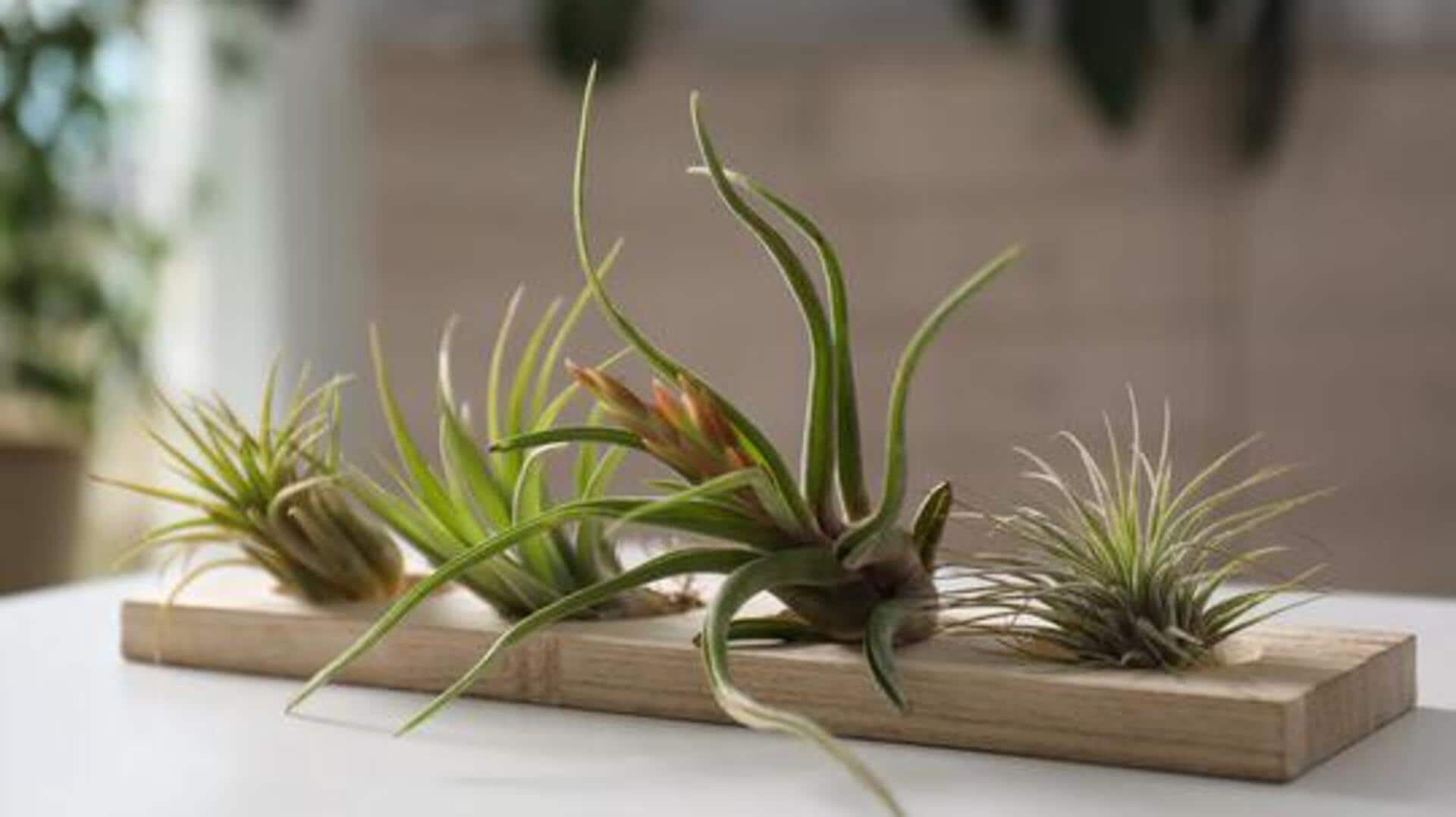
How to grow air plants indoors
What's the story
Air plants, or tillandsias, are the perfect indoor plants as they need little care and can flourish without soil. These unique plants absorb moisture and nutrients from the air through their leaves, making them ideal for busy plant lovers. With their quirky appearance and low maintenance, air plants can be a great addition to any indoor space. Here's how you can grow them indoors successfully.
Tip 1
Choosing the right location
Selecting the right location is key to keeping air plants healthy. They love bright, indirect light, so placing them near a window with filtered sunlight is ideal. Avoid direct sunlight as it may scorch their leaves. If natural light is insufficient, you can use fluorescent lights for about 12 hours a day to meet their light requirements.
Tip 2
Watering techniques for air plants
Proper watering is essential for air plants' survival. Soak them in room temperature water for 20 minutes once a week, or mist them every few days if your environment is dry. Make sure to shake off excess water after soaking to prevent rot. Ensure good air circulation around the plants by placing them in well-ventilated areas.
Tip 3
Humidity levels and air circulation
Air plants thrive in environments with moderate humidity levels of around 50% to 70%. If you live in a drier climate, you can increase humidity levels by placing a humidifier nearby or grouping several plants together to create a microclimate. Good air circulation is also important; avoid placing them in enclosed spaces where moisture can build up excessively.
Tip 4
Fertilizing your air plants
While air plants don't need much fertilizer, occasional feeding can promote growth and flowering. Use a bromeliad or air plant-specific fertilizer diluted to half strength once a month during their growing season, spring through summer. Apply it during watering sessions by soaking them in the diluted solution for about 20 minutes.
Tip 5
Handling pests on air plants
Although air plants are generally pest-resistant, they may occasionally fall prey to mealybugs or spider mites. Inspect your plants regularly for signs of infestation, such as webbing or tiny white cotton-like spots. If you find pests, treat them promptly by rinsing the affected areas with water and applying insecticidal soap if necessary, following the product instructions carefully.